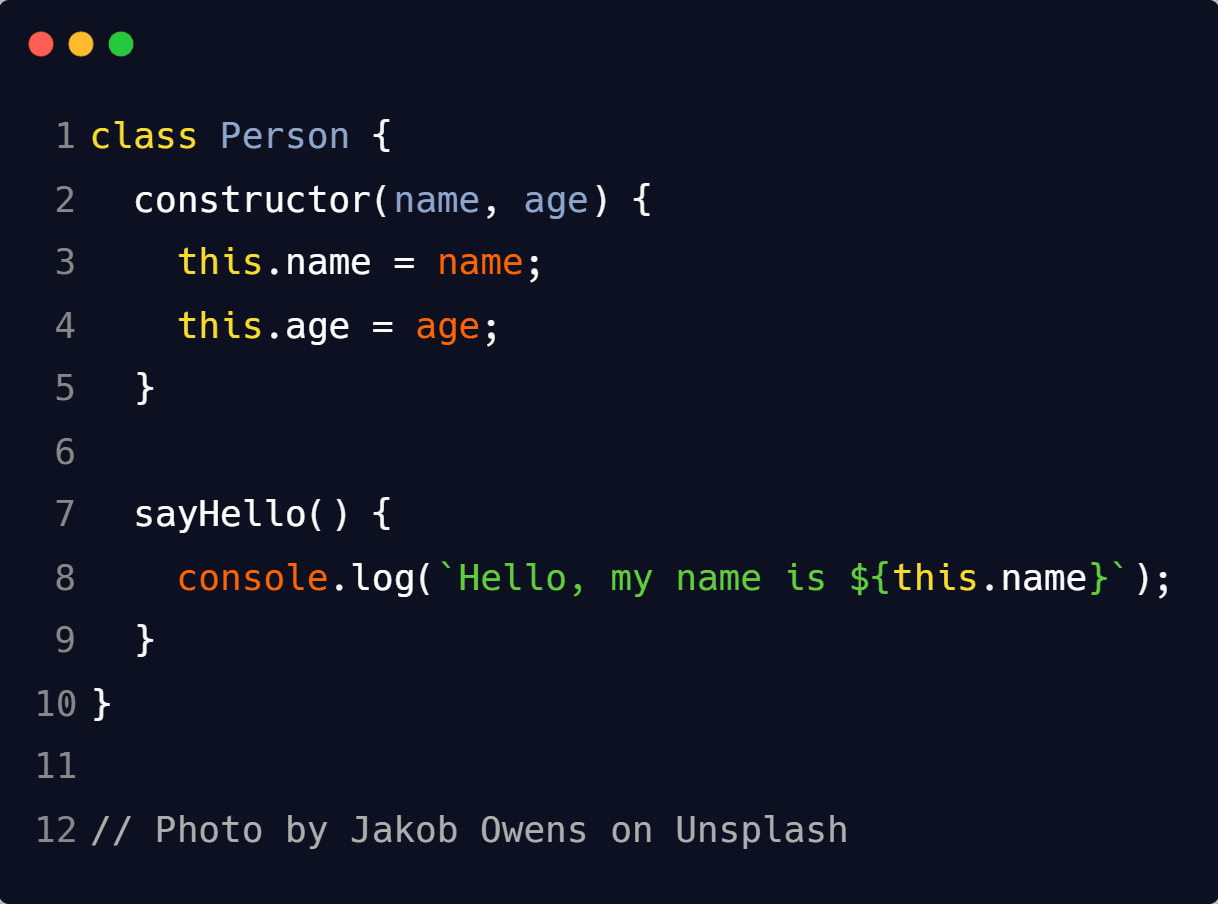
JavaScript Classes - with code examples

- Tags:
- javascript
- js-class
JavaScript class provide a much simpler and clearer syntax for creating objects and dealing with inheritance.
Classes are a syntactical sugar over JavaScript's existing prototype-based inheritance. The class syntax does not introduce a new object-oriented inheritance model to JavaScript.
In this article, we'll look at how to use classes in JavaScript, including how to define a class, create objects from a class, and use inheritance.
Defining a Class
To define a class in JavaScript, use the class keyword followed by the class name. Inside the class, you can define properties and methods.
For example, here's a class for creating a Person object:
class Person {
constructor(name, age) {
this.name = name;
this.age = age;
}
sayHello() {
console.log(`Hello, my name is ${this.name}`);
}
}
The constructor() method is a special method for creating and initializing an object created with a class. There can only be one special constructor method.
Creating Objects from a Class
Once you've defined a class, you can use the new keyword to create an object from it.
For example, here we create a new Person object:
const person = new Person('John', 30);
The new keyword creates a new object and calls the constructor() method on the object.
Using Inheritance
JavaScript classes also support inheritance. To extend a class, use the extends keyword.
For example, here we create a Student class that extends the Person class:
class Student extends Person {
constructor(name, age, grade) {
super(name, age);
this.grade = grade;
}
sayHello() {
console.log(`Hello, my name is ${this.name} and I'm in grade ${this.grade}`);
}
}
The super() method is used to call the parent class constructor method.
Let's look at an example of how the super() method can be used. In this example, we have a parent class called Animal and a subclass called Dog. The Dog class inherits from the Animal class and has a constructor that takes in a name argument.
// Parent class
class Animal {
constructor(name) {
this.name = name;
}
}
// Subclass
class Dog extends Animal {
constructor(name) {
// Call the parent class constructor
super(name);
}
}
// Create a new instance of the Dog class
const myDog = new Dog('Fido');
// Log the name property
console.log(myDog.name); // Output: Fido
As you can see, the super() method is used to call the parent class constructor and pass in the name argument. This allows the Dog class to access and modify the parent class properties.
Conclusion
JavaScript classes provide a much simpler and clearer syntax for creating objects and dealing with inheritance. They are a syntactical sugar over JavaScript's existing prototype-based inheritance.
With classes, you can define a class, create objects from a class, and use inheritance. The constructor() method is used to create and initialize an object created with a class, and the super() method is used to call the parent class constructor method.